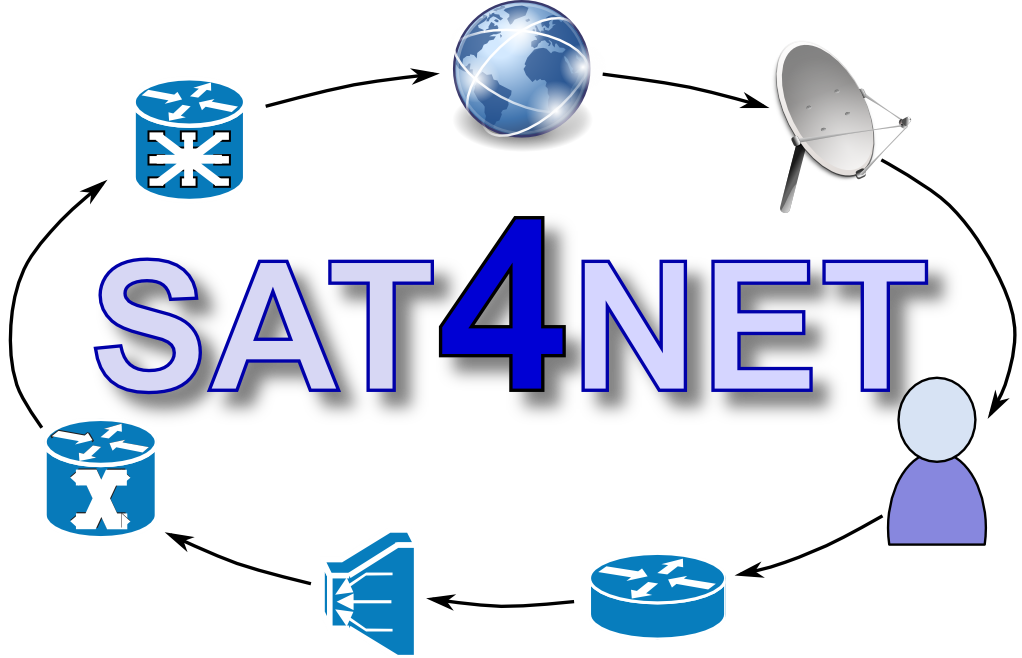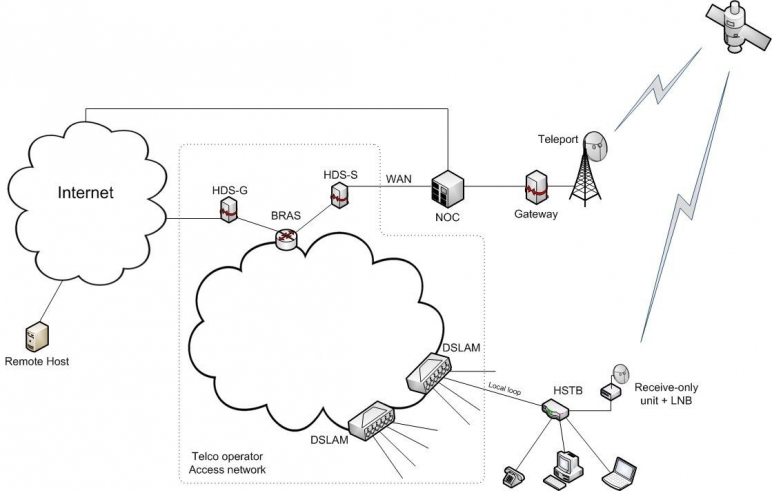
-
StatusCompleted
-
Status date2016-03-11
The ultimate goal of SAT4NET is to define a roadmap, feasible in both economic and technological terms, for the deployment of hybrid xDSL/satellite networks, where downstream satellite communications are enabled only when the performance perceived by the end user using the xDSL network is not deemed to be sufficient. Such document can be used to define a common European strategy which is line with the Horizon 2020 objectives and is of practical interest for both citizens and economic operators.
More specifically, the project proposes a reference architecture, also detailing interfaces, signalling protocols, and algorithms, that is suitable for a number of scenarios with high business and social impact which are representative of the current European xDSL situation. The effectiveness of the proposed solution has been assessed in quantitative manner through numerical simulation.
There are many challenges associated to the proposed study, including the following: unknown impact of crosstalk phenomena (both NEXT and FEXT) and frequency-dependent attenuation and dispersion of the networks typically deployed across Europe on Quality of Service perceived by end users; need for new interface protocols between the ground and the satellite network; analysis of synchronization and other interfacing issues (including modes of operations, specific protocols, etc.) between the satellite network and the ground-based DSL network; identification of proper signal solutions (modulation, multiple access, etc.) to meet the system requirements while trading off system complexity and user receiver complexity.
The benefits of the project is to provide ESA and other relevant national and international authorities with a unified view of the current status of xDSL market and technologies in Europe and a quantitative assessment of a hybrid solution complementing xDSL ground networks with satellite downstream communications.
The following new elements are proposed:
- Hybrid Set Top Box (HSTB): located in the customer premises, acts as a normal xDSL modem as long as the terrestrial network performance is deemed to be “sufficient” for the current use. The HSTB also embeds a satellite modem (receive only) which is enabled when performance degradation is detected.
- Hybrid DSL Satellite - Ground element (HDS-G): connects the xDSL telecom operator network to the Internet backbone; acts as the home agent for the HSTB devices while their downstream is roamed via the satellite network, with which it interacts for dynamic configuration of parameters.
- Hybrid DSL Satellite – Satellite element (HDS-S): connects to the teleport and performs multiplexing functions, in addition to interacting with the NOC for obtaining access to the satellite platform resources.
- Network Operation Centre (NOC): coordinates multi-teleport access to the satellite platform resources.
System architecture

The proposed architecture includes network elements already in use in xDSL networks (e.g. DSLAM and BRAS) and network elements specifically defined for SAT4NET like HDS- G, HDS-S and HSTB.
HSTB acts as a hybrid terrestrial/satellite modem able to receive packets through the traditional terrestrial xDSL line and through the satellite link.
The boosting procedure starts based on specific algorithm that consider a percentage of local loop bandwidth to move the download traffic from the terrestrial to satellite path. Then the algorithm also considers the parameters for the restoring procedure.
Further development following ESA program.
The project has been completed providing a description of the steps to be performed for the implementation of the HSTB and the revenue analysis. A first integration of terrestrial downlink path in to a satellite modem has been also provided.






